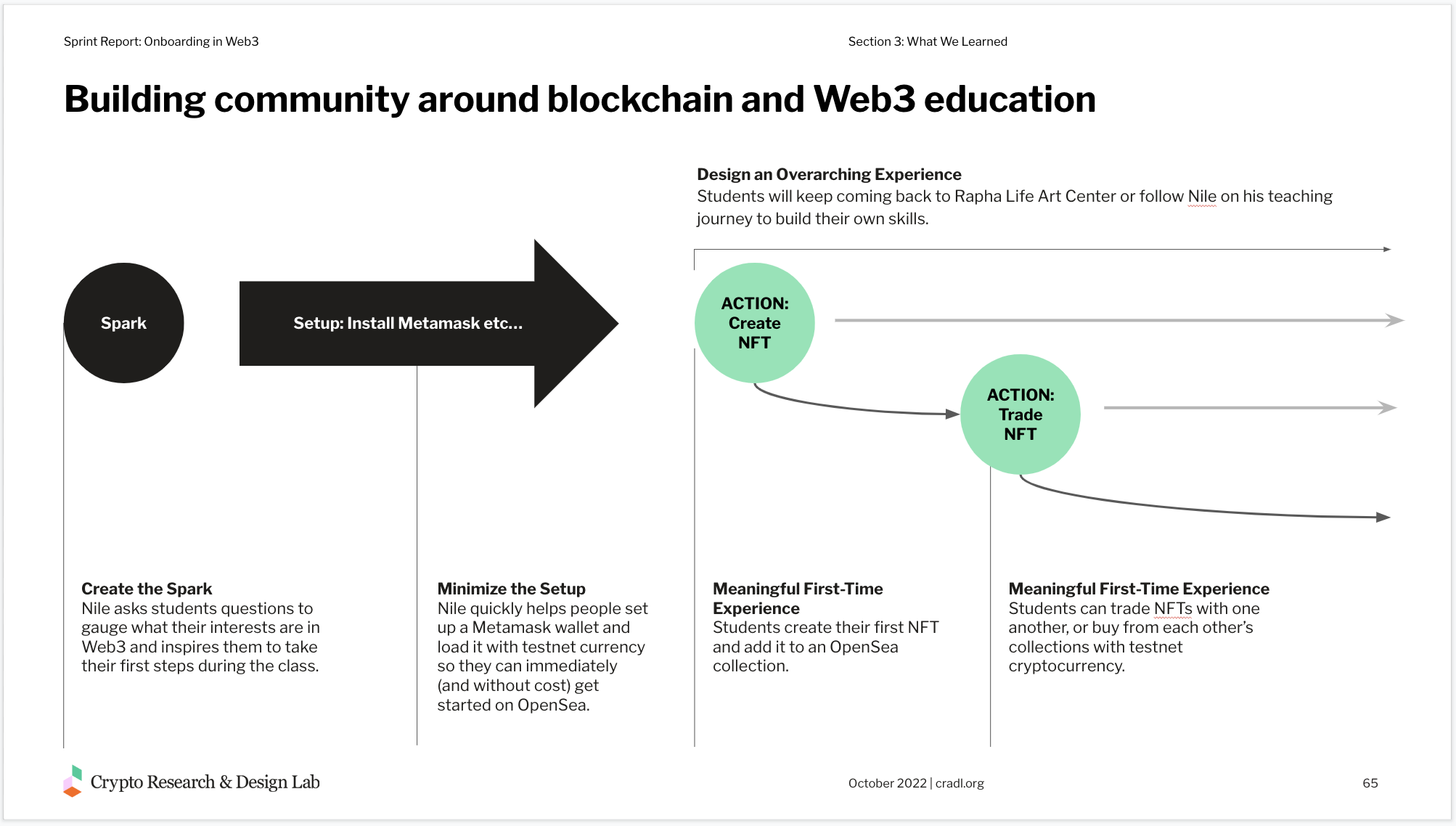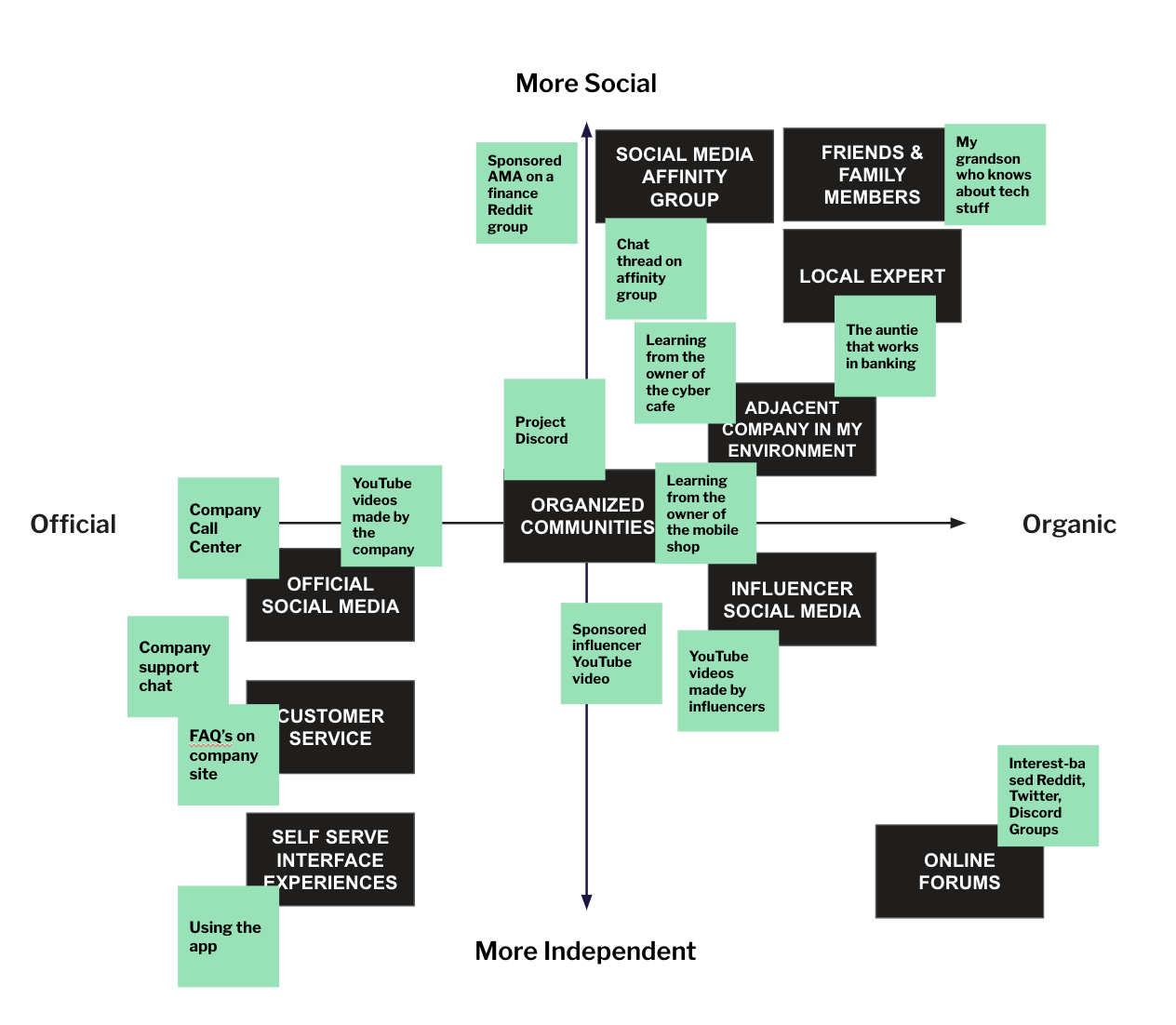Onboarding to Cryptocurrency
What actually matters
This report outlines a framework for designing onboarding experiences for people new to cryptocurrency and three case studies of different onboarding experiences. Onboarding is a social process; people are introduced to, learn about, and deepen their knowledge about apps through actions within communities. It's often misunderstood as a process limited to specific steps in app interfaces.
“...despite DeFi’s innovation, its technology is much more difficult for the layman to use than traditional money services. ”
Yaya Fanusie for Forbes
Report Goals
Identify best practices and challenges people face getting started with cryptocurrency.
Identify who was using cryptocurrency in 2022.
Demystify the onboarding process to cryptocurrency and offer a framework for builders to use when considering how their target markets will onboard.
Share real stories of individuals and companies crafting experiences that broaden cryptocurrency's user base.
What’s in it:
A demographic summary of cryptocurrency usage based on a series of surveys from a variety of institutions.
An Onboarding Template for Crypto Experience Designers and their counterparts (e.g., engineers, product managers) that outlines the critical factors to consider when crafting first-time experiences for people new to crypto.
A taxonomy on Places to learn about Cryptocurrency that captures the “touchpoints” or interactions people have when learning about cryptocurrency. Crypto experience designers should use this framework in onboarding their target markets.
Three Case Studies of people's first crypto experiences:
Key Takeaways
The more people understand the value propositions of using cryptocurrencies, the more likely they are to adopt them.
Ownership is the best teacher. People learn by doing. The experience of buying and holding (or hodling) cryptocurrency helps people understand the process (and may inspire them to learn more).
The industry needs to re-think “crypto literacy” and shift from explaining the tech to explaining the value and how to use it. Instead, teams should focus on the Minimum Viable Knowledge needed for people to have their first experiences.
Onboarding is often a social experience. From the initial Spark and over the long-term journey, people learn the value of cryptocurrency and Web3—and how to use it for themselves—from the community around them through various branded and informal channels.
“Onboarding Guides” play a critical role in curating the journey. People who play the “onboarding guide” role in their communities are critical for helping people become comfortable with cryptocurrency.
Let people feel the value by focusing onboarding on complete First-Time Experiences.…and minimize the setup steps until after people have felt the value.
The Onboarding Template for Crypto Experience Designers offers a way to think about the elements that make up an onboarding journey. For analysts, it provides a framework for understanding why certain onboarding journeys are more effective than others. For experience creators, it is a template for choreographing the first-time experiences people will have with a product or service. Our report shows three examples linked to our case studies to show the template in action.
Our Places to Learn about Cryptocurrency Framework outlines ten different places where people learn about cryptocurrency.
People learn about and deepen their experience with cryptocurrency in various places. Many apps focus on the user interface design of a first-time user flow, but it is important to consider the broader context that shapes a person’s experience. Community tends to be a big part of how people progress through the learning journey.
Our report illustrates three case studies of onboarding experiences that focus on three of the quadrants of the Places to Learn about Cryptocurrency Framework.
Nile, the Community Teacher.
The Bitcoin Classic Streetball Tournament.
The Black Wall Street App Experience.
Related CRADL Content
Read our report
Fill out this form to access a Google Slides and PDF version of our reports.
Our primary goal is impact. We encourage readers to share, iterate on, and apply our research findings. All of our reports are available as Googles Slides and PDFs so that you can easily copy and paste content from the slide deck into your materials. Be sure to attribute CRADL as the source.
All of our research is under a Creative Commons BY-SA 4.0 license.





